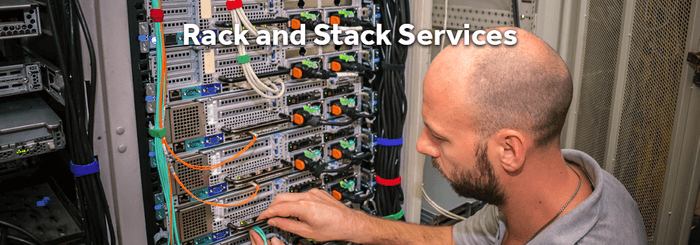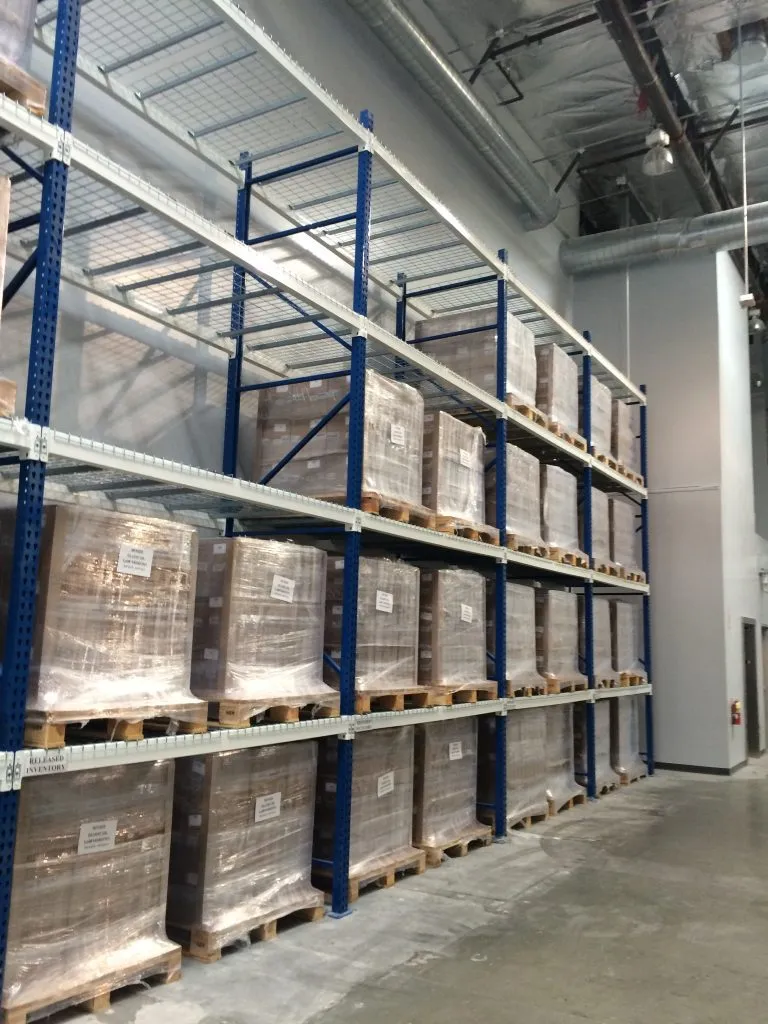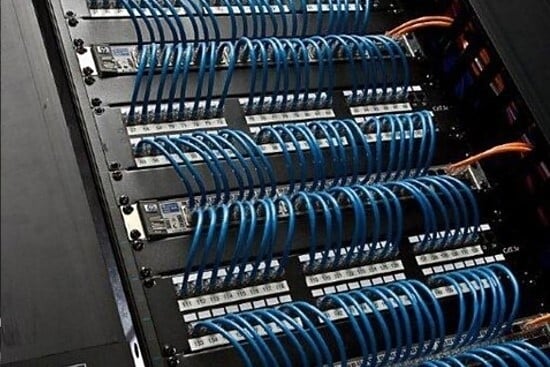Traditional data centers, often disorganized and inefficient, struggle to keep up with increasing data demands. As businesses scale, they find it difficult to optimize space, manage power consumption, and ensure equipment is compatible—all of which can lead to system slowdowns and costly downtime.
These inefficiencies can result in poor system performance, increased costs for energy and cooling, and even potential security risks as equipment becomes harder to maintain. Businesses may find themselves spending more time troubleshooting and less time focusing on growth and innovation.
Rack and stack data centers provide the solution by offering a structured, efficient way to install, organize, and scale IT infrastructure. perfect By partnering with experienced rack and stack service providers, companies can achieve a streamlined, cost-effective data center that grows with their needs.
What Is Rack and Stack Data Center?
A rack and stack data center is a system for efficiently organizing servers, networking devices, and storage units in a physical structure, typically within racks or cabinets.
The term “rack and stack” refers to the process of physically mounting servers, switches, and other equipment in designated racks, simplifying hardware management and maximizing space.
These systems allow IT professionals to efficiently scale, maintain, and optimize data infrastructure, particularly as businesses grow and require greater capacity.
Rack and stack data centers are essential for managing and securing data at scale, which is vital for industries like cloud computing, finance, telecommunications, and e-commerce.
By consolidating hardware into racks, companies can streamline data storage and improve overall performance.
How to Design and Build a Data Center: Expert Data Center Design & Planning Guide | Reboot Monkey
Key Benefits of Rack and Stack Data Centers
Rack and stack data centers offer numerous benefits that make them an ideal choice for businesses looking to streamline and scale their IT infrastructure.
These benefits go beyond simple hardware organization, impacting everything from cost-efficiency to performance.
Here’s how rack and stack data centers can revolutionize your IT operations:
Scalability and Flexibility
Rack and stack systems provide exceptional scalability, allowing businesses to grow without overhauling their infrastructure. As your data needs increase, you can easily add more servers, storage units, and networking equipment into your existing rack layout.
This flexibility is particularly crucial for businesses that need to expand quickly without disrupting operations.
- Quick expansion: Add or remove equipment without major downtime.
- Adaptable design: Customize racks for different hardware types.
Cost-Efficiency
One of the key advantages of rack stacking solutions is cost savings. These solutions help optimize space and energy usage, allowing businesses to maximize their resources.
With more efficient data center rack installation, the physical footprint of your servers and equipment is minimized, which can lead to lower power consumption and reduced cooling costs.
- Lower operational costs: Reduced power and cooling needs.
- Efficient space utilization: Maximize available space in your data center.
Improved Performance and Speed
Rack and stack data centers help enhance overall performance. The organized arrangement of servers, storage devices, and networking equipment leads to better airflow and faster communication between systems.
This organization boosts data processing speeds and minimizes latency, ensuring your data center runs smoothly and efficiently.
- Faster data transfer: Reduced latency and optimized communication.
- Enhanced airflow: Better cooling for improved performance.
Key Components of a Rack and Stack Data Center
A well-organized rack and stack data center consists of several crucial components that work together to ensure the efficient operation of IT infrastructure.
Understanding these components is vital for businesses considering data center rack installation or planning to optimize their existing setup.
Let’s break down the key elements that make up a rack and stack data center:
Racks and Server Cabinets
Racks are the foundation of any rack and stack data center. These vertical storage units are designed to house and organize servers, networking equipment, and storage devices.
Server cabinets, which are often used in conjunction with racks, provide additional security, support, and protection for your hardware. The design of these racks ensures optimal airflow, reducing the risk of overheating and hardware failure.
- Efficient space usage: Organize multiple devices in a compact footprint.
- Improved cooling: Well-ventilated racks help prevent overheating.
Servers and Storage Units
They are the core of any data center. Servers process and manage data, while storage units hold critical information. In a rack and stack data center, these devices are mounted in racks for easy access and maintenance.
Proper alignment and installation are critical for ensuring optimal performance and reducing downtime.
- Servers: Manage processing and computing needs.
- Storage: Store vast amounts of data for easy retrieval.
Networking Equipment
Networking equipment like routers, switches, and firewalls are essential for maintaining connectivity within the data center. These devices are typically housed in the same racks as servers and storage units, ensuring smooth data flow across the network.
Proper rack stacking solutions help keep cables organized and equipment easily accessible for troubleshooting or upgrades.
- Routers and switches: Manage traffic and ensure seamless data flow.
- Firewalls: Protect the network from potential threats.
Maximising Physical Space in Data Center Design | Reboot Monkey
Power and Cooling Systems
A rack and stack data center also requires reliable power and cooling systems. Power distribution units (PDUs) ensure that all equipment receives the necessary power, while cooling solutions—such as air conditioning units or liquid cooling systems—prevent equipment from overheating.
Proper planning for these components during data center rack installation is critical for ensuring continuous uptime.
- Power distribution: Ensure stable, uninterrupted power to all devices.
- Cooling systems: Prevent overheating and maintain optimal temperatures.
The Rack and Stack Data Center Process
Pre-Installation Planning
Before any physical installation begins, careful planning is essential. This includes assessing the hardware needs of the business, choosing the appropriate server racks, determining cooling requirements, and ensuring that electrical infrastructure can support the data center’s power demands.
Rack Assembly and Equipment Installation
Once the planning stage is complete, the rack assembly process begins. Data center rack installation involves carefully placing servers, storage units, and networking equipment into the racks.
This step requires precision and expertise to ensure that the equipment is arranged for optimal airflow, accessibility, and performance.
Post-Installation Configuration and Testing
After the physical setup, configuration and testing are conducted to ensure everything is functioning as expected. This includes setting up software, networking protocols, and conducting stress tests to verify the system’s stability and performance under load.
Choosing the Right Rack and Stack Service Providers
When it comes to implementing a rack and stack data center, selecting the right service provider is essential for ensuring a smooth installation and efficient long-term performance. The right provider will not only help with data center rack installation but also offer ongoing support and expertise.
Here are the key factors to consider when choosing a rack and stack service providers:
Expertise and Experience
The first step in choosing a reliable rack and stack service providers is to evaluate their experience. A provider with extensive experience in data center design and rack stacking solutions will be better equipped to handle complex installations and provide tailored solutions for your business.
Look for service providers who have a proven track record in the industry and have worked on similar projects.
- Proven experience: Work with providers who have handled similar projects.
- Industry knowledge: Choose providers familiar with the latest rack and stack technology.
Comprehensive Services
A full-service rack and stack provider should offer a range of services that go beyond just installation. Look for providers who assist with pre-installation planning, providing solutions for power, cooling, and space optimization.
Post-installation support is also critical, as you may need ongoing maintenance, upgrades, or troubleshooting.
- Pre-installation planning: Ensure a smooth setup by considering your space and hardware needs.
- Post-installation support: Have access to ongoing maintenance, upgrades, and troubleshooting.
Customization and Scalability
As your business grows, your data center will need to scale. The right rack and stack service providers will offer scalable solutions that can accommodate your future needs.
Whether you’re expanding your server capacity or integrating new technologies, your provider should be flexible enough to adapt your setup as necessary.
- Scalable solutions: Ensure that your infrastructure can grow with your business.
- Customization: Work with providers who can tailor solutions to fit your unique requirements.
Customer Reviews and Reputation
Finally, research customer reviews and case studies to assess the provider’s reputation. Positive feedback and successful deployments are strong indicators that a provider can deliver reliable and high-quality services.
Additionally, consider the customer service and responsiveness of the provider to ensure they will be available when needed.
- Customer feedback: Look for positive reviews and success stories from other businesses.
- Reputation: Choose providers known for their reliability and quality of service.
DCIM (Data Center Infrastructure Management) Tools and Their Benefits | Reboot Monkey
Challenges and Considerations in Rack and Stack Data Centers
While rack and stack data centers offer numerous benefits, they also come with specific challenges and considerations that businesses need to address to ensure smooth operation.
Here are some of the key challenges to consider:
Space Optimization
Space is often limited in data centers, and optimizing the available area is crucial for efficient operations.
Rack and stack data centers are designed to maximize space, but without careful planning, equipment may be overcrowded, leading to inefficient airflow, difficult maintenance, and potential overheating.
Proper data center rack installation is vital to ensure equipment is organized in a way that allows easy access while maintaining optimal performance.
- Efficient layout: Proper rack placement helps maximize space without compromising airflow.
- Avoiding overcrowding: Overcrowding can lead to poor performance and increased maintenance costs.
Energy Consumption and Efficiency
Energy consumption is one of the biggest operational costs in a data center. As servers and networking equipment increase in power, managing energy efficiency becomes increasingly important.
Poor cooling systems, excessive power usage, or inefficient rack stacking solutions can lead to high electricity costs and environmental concerns. Companies should consider energy-efficient equipment and cooling solutions during the rack and stack data center design and installation phases.
- Efficient cooling: Incorporating modern cooling techniques, like liquid cooling, can reduce energy consumption.
- Energy-efficient equipment: Using energy-saving servers and networking gear helps reduce operational costs.
Hardware Compatibility
One of the key considerations in any data center installation is ensuring that all hardware is compatible with one another. This is especially true when integrating new equipment with an existing setup.
For a rack and stack data center to function smoothly, the hardware—whether it’s servers, storage devices, or networking equipment—needs to be compatible in terms of size, power requirements, and cooling needs.
Working with experienced rack and stack service providers ensures that your equipment will integrate seamlessly.
- Compatibility testing: Ensure all equipment meets the technical specifications.
- Future-proofing: Plan for future equipment upgrades without disrupting existing operations.
Innovations in Rack and Stack Data Center Technology
AI and Automation Integration
The integration of AI and automation is revolutionizing rack and stack data centers. From predictive maintenance to dynamic resource allocation, AI tools can improve system efficiency and reduce downtime.
Automation helps streamline operations, from hardware configuration to software updates.
Liquid Cooling Systems
As servers become more powerful, they generate significant amounts of heat. Liquid cooling systems, which circulate coolants to remove excess heat, are increasingly being integrated into rack and stack data centers.
These systems are more energy-efficient than traditional air cooling and allow for denser rack configurations.
Hybrid Cloud Solutions: The Perfect Balance for Modern Organizations | Reboot Monkey
Future of Rack and Stack Data Centers
Emerging Trends
The future of rack and stack data centers lies in further optimization and integration with emerging technologies. AI-driven infrastructure management, 5G, and quantum computing will shape the next generation of data centers, offering even more powerful and efficient solutions for businesses.
Sustainability and Green Data Centers
With increasing concerns over climate change and energy consumption, green data centers are gaining traction.
Rack and stack solutions that prioritize energy-efficient hardware, renewable energy, and sustainable cooling systems are becoming more common, ensuring that data infrastructure supports both technological and environmental sustainability.
The Power of Rack and Stack Data Centers
As businesses continue to rely more heavily on data and technology, the importance of an efficient and scalable IT infrastructure cannot be overstated.
Rack and stack data centers offer the ideal solution for organizing and optimizing hardware, reducing operational costs, and ensuring the performance of your IT systems.
With key benefits like flexibility, scalability, and improved cost-efficiency, adopting a rack and stack approach is essential for companies looking to stay competitive in today’s fast-paced digital world.
For businesses looking to optimize their IT infrastructure and ensure they are ready for what’s next, embracing rack and stack solutions with Reboot Monkey is the way forward.
Ready to optimize your IT infrastructure? Explore our rack and stack data center solutions at Reboot Monkey and get in touch with our experts to find the best solution for your business!
FAQs
What is the difference between a rack and stack data center and a traditional data center?
A rack and stack data center is optimized for space and efficiency by organizing equipment within racks, whereas traditional data centers may have a more scattered and less structured setup.
How do rack and stack data centers contribute to energy efficiency?
By utilizing efficient rack layouts and integrating advanced cooling solutions, rack and stack data centers can significantly reduce energy consumption compared to traditional setups.
Can rack and stack data centers be easily scaled?
Yes, rack and stack data centers offer tremendous scalability, allowing businesses to add more servers and equipment with minimal disruption to the existing infrastructure.
How do I choose the right rack and stack service providers?
Look for a provider with experience in data center installation, good customer reviews, and the ability to provide ongoing maintenance and scalability options.




